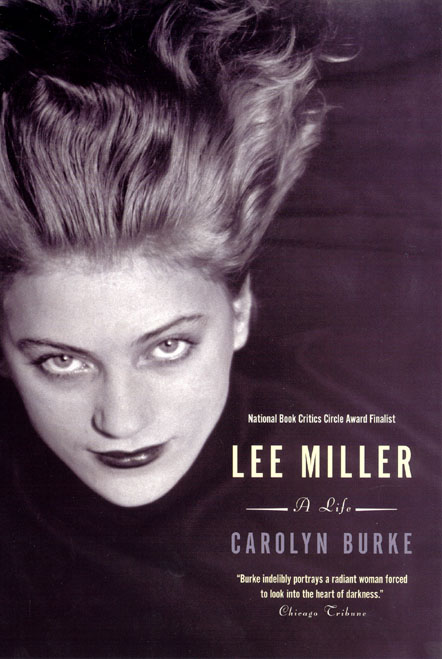The art and life of Lee Miller
 “The Art of Lee Miller” is a major retrospective of works by and about the artist curated by the Victoria & Albert Museum in London. The exhibition has now come stateside; it opened a week ago at the Philadelphia Museum of Art and will travel to the San Francisco Museum of Modern Art in July.
“The Art of Lee Miller” is a major retrospective of works by and about the artist curated by the Victoria & Albert Museum in London. The exhibition has now come stateside; it opened a week ago at the Philadelphia Museum of Art and will travel to the San Francisco Museum of Modern Art in July.
A lengthy critical essay by Judith Thurman was in the January 21 New Yorker, while a nicely illustrated article was in the February 4 issue of Newsweek. Like Carolyn Burke’s biography Lee Miller: A Life which we recently released in paperback, the articles deliver a fascinating look at the life and artistry of Miller. She dominated the world of high fashion in the late 1920s, modeling for magazines like Vogue and Vanity Fair, and then became a respected photographer herself, leaving an indelible mark on the worlds of fine art photography and photojournalism. Writing for the New Yorker, Thurman details the pivotal turn in Miller’s career from art object to artist:
If one is to believe the story, Condé Nast noticed her crossing the street just in time to pull her from the path of an oncoming vehicle, and this fortuitous collision led to an interview with Edna Chase, Vogue‘s editor in chief.… She was soon posing for Steichen, Arnold Genthe, and Nickolas Muray, the leading photographers of the day.…
In 1929, with several lovers fighting for the honor of seeing her off, and café society sad to lose its star playgirl, Miller sailed for Europe with the ambition “to enter photography by the back end.…” She planned to do some modeling for George Hoyningen-Huene at Paris Vogue while she apprenticed with Man Ray, a leader of the avant-garde and master of many genres—painting, photography, sculpture, and graphic art.…
Under Man Ray’s tutelage, Miller mastered the use of the Graflex camera, with glass plates, and then the Rolleiflex; studio lighting setups; cropping and retouching, improvisation with the viewfinder; and his techniques for developing.
The article goes on to detail Miller’s extraordinary, but tumultuous life, and speaks in detail about her groundbreaking work as one of the first female war correspondents during WWII. A theme which the Newsweek article picks up as well:
After she moved [to] London in 1939, she began her most important photography. The cockeyed perspective she’d absorbed from the surrealists served her well in the arresting, absurdist images she captured during the Blitz: a crushed Remington typewriter; a male mannequin standing incongruously in a heap of curbside rubble.… She rode into Germany with the U.S. Army, starkly documenting the corpses and the ovens of Buchenwald and Dachau—and zooming in, almost poetically, on a dead SS guard floating in a canal. She also shot Hitler’s apartment in Munich—then got in his tub for her first bath in weeks, a moment caught on film by [Life photographer Dave] Scherman. Her combat boots on the bathmat are still caked with the mud of Dachau from earlier in the day.
The most thorough exploration of Miller’s life and career can be found in Burke’s 400-plus page biography Lee Miller: A Life. We have an extended excerpt from the book, dealing with Miller’s experiences covering the War in France—from the Allied invasion of Normandy to the German surrender.
A slide show is online at the New Yorker.